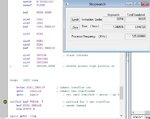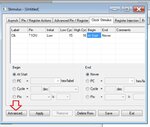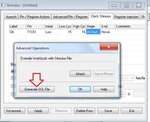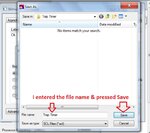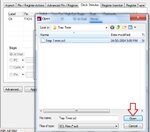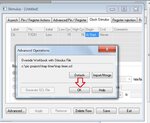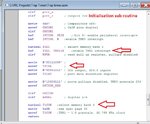ljcox
Full Member level 5
- Joined
- Feb 1, 2006
- Messages
- 252
- Helped
- 25
- Reputation
- 50
- Reaction score
- 23
- Trophy points
- 1,298
- Location
- Melbourne Australia
- Activity points
- 3,110
I have MPLAB V8.73 and I'm using MPLAB SIM to simulate a programme I wrote for a PIC 16F684.
I want to drive TMR1 with a 32.768 kHz crystal.
But when I try to simulate this situation, TMR1 does not change.
I set _INTOSC_OSC_NOCLKOUT in the configuration and the following bits in the programme:-
PIE1, TMR1IE
INTCON, PEIE
T1CON, TMR1CS; T1CON, T1OSCEN & T1CON, TMR1ON
I'm using PIR1, TMR1IF to determine when an overflow of TMR1 occurs.
I setup the Clock Stimulus as shown in the attachment.
What am I missing?
Any advice will be appreciated.
Len
I want to drive TMR1 with a 32.768 kHz crystal.
But when I try to simulate this situation, TMR1 does not change.
I set _INTOSC_OSC_NOCLKOUT in the configuration and the following bits in the programme:-
PIE1, TMR1IE
INTCON, PEIE
T1CON, TMR1CS; T1CON, T1OSCEN & T1CON, TMR1ON
I'm using PIR1, TMR1IF to determine when an overflow of TMR1 occurs.
I setup the Clock Stimulus as shown in the attachment.
What am I missing?
Any advice will be appreciated.
Len

